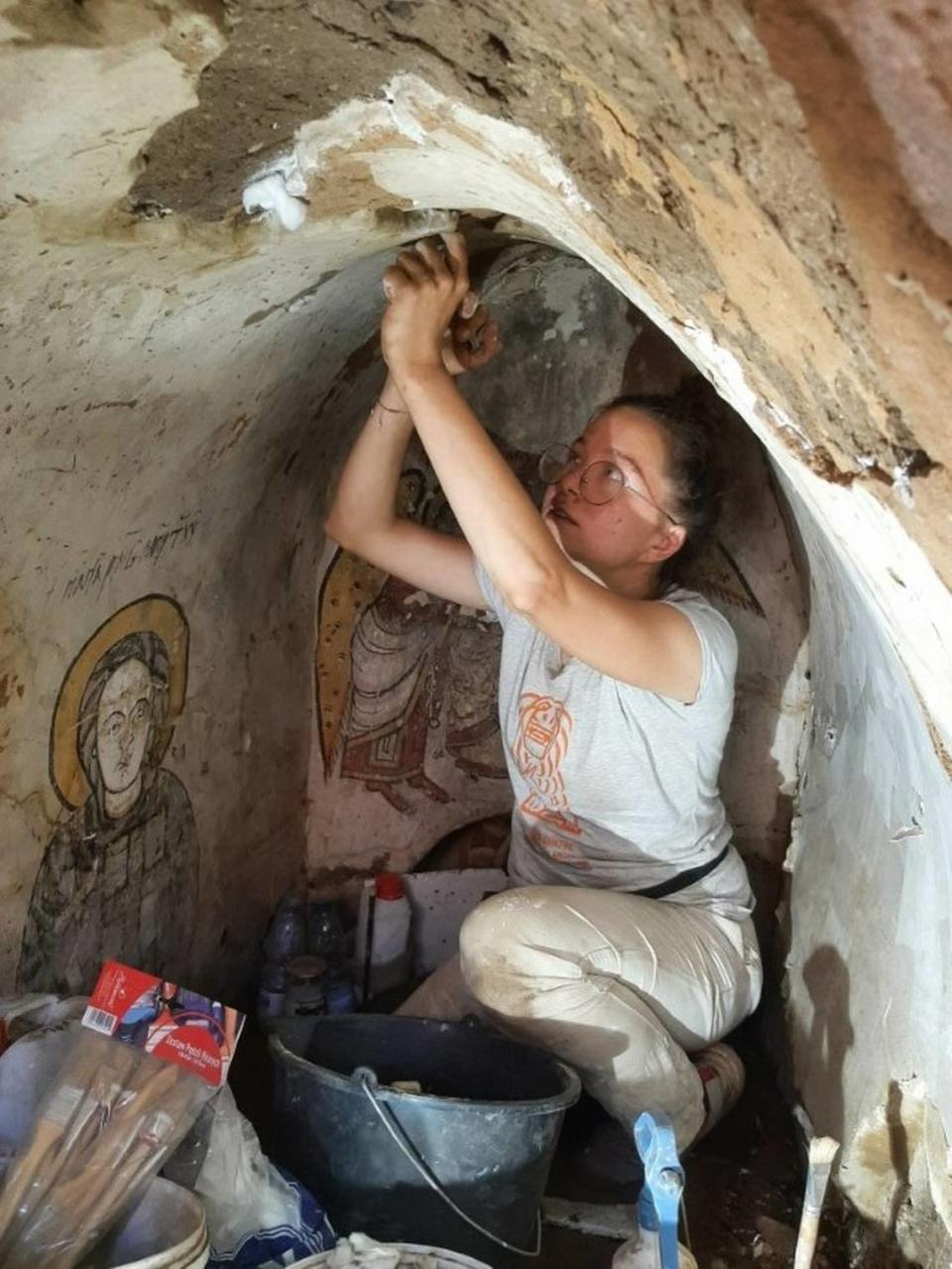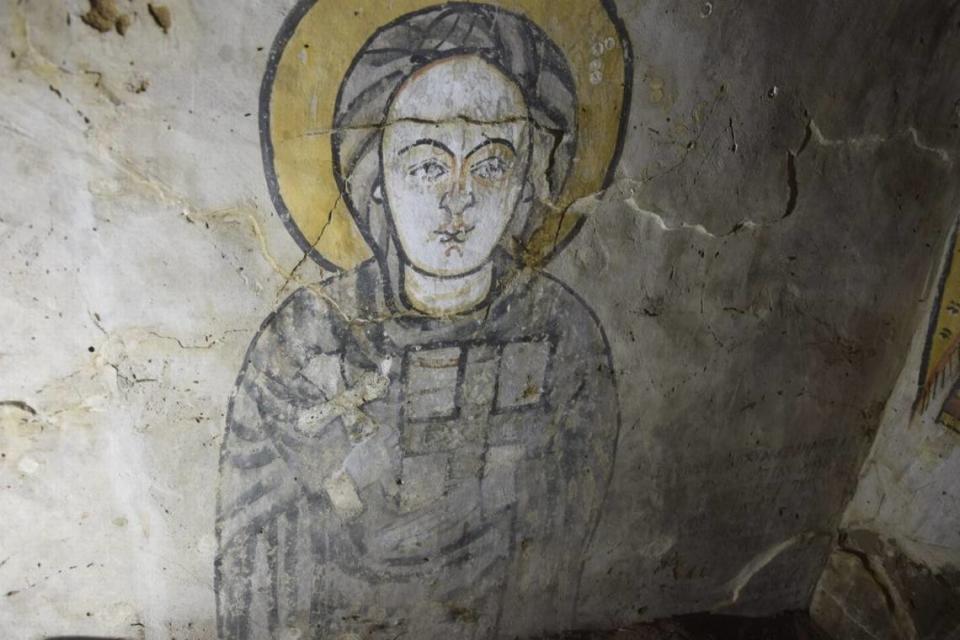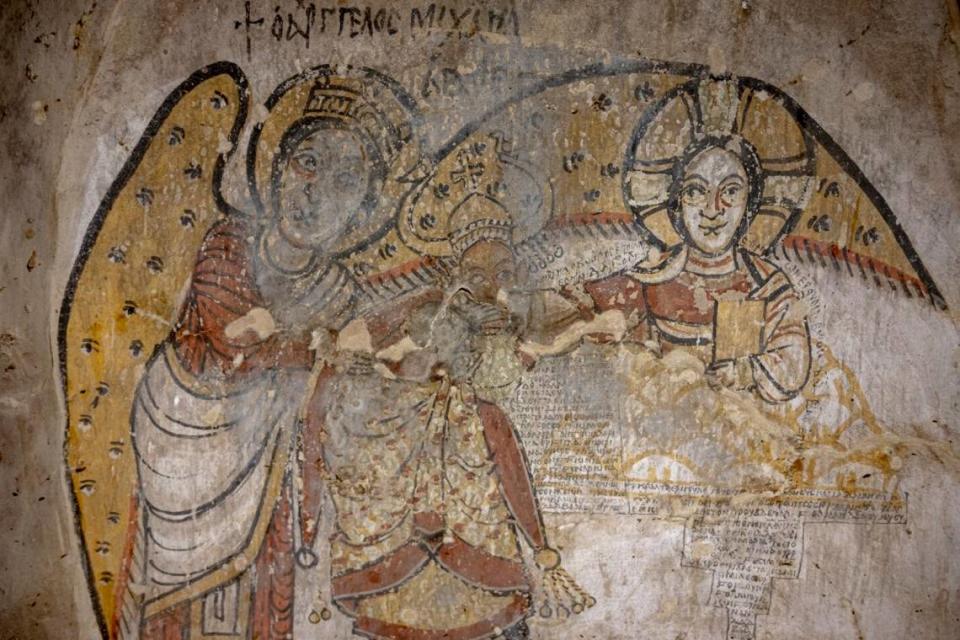Hole in ground leads to crypt-like space with ‘unique’ paintings in Sudan. Look inside
Hidden beneath the desert of northern Sudan, a small chamber sat undisturbed amid the ruins of a once-thriving city. Although filled with paintings of recognizable faces, the chamber held more questions than answers.
The chamber was uncovered during excavations at Old Dongola, a millennium-old city on the bank of the Nile river in northern Sudan. The urban ruins were the capital city of the kingdom of Makuria from the fifth to 14th century, according to the Polish Centre of Mediterranean Archaeology at the University of Warsaw.
The city flourished under the Makurian kings, becoming a leading urban and Christian religious center, according to researchers. A massive citadel, royal palace, multi-story homes, pottery workshops, churches and a large building that might have functioned as a throne hall were all built under the Makurian kings.
After the kings’ reign ended, Old Dongola became part of the Muslim Sultanate of Funj in the 15th century. The city was abandoned 300 years later, researchers said.
While exploring houses from the city’s Funj period, archaeologists found an opening beneath a floor, according to an April 5 release from the Polish Centre of Mediterranean Archaeology at the University of Warsaw. Photos shared on Facebook show this narrow opening.
Crawling through the hole, researchers found a small crypt-like structure built with bricks and decorated with paintings, the release said. Archaeologists called the centuries-old chamber a “surprise” to find.

The cramped space had three “unique” wall paintings showing Christian scenes, the release said.
One of the chamber’s side walls had a painting “of the Virgin Mary,” researchers said. Photos show the female figure wearing dark colored robes and holding a book and a cross. A bright yellow halo surrounds her head.
The style of this painting is not a “typical” depiction “of Mary in Nubian art,” experts said.

The other side wall had a painting of Jesus Christ, the release said. With one hand, the male figure holds a book. With the other hand, he gives “a gesture of blessing,” researchers said.
The center painting was also atypical, experts said. It shows a Makurian king, the center figure, bowing to Jesus and kissing his hand. Jesus, the right-hand figure, is seated on a cloud. The left-hand figure, the archangel Michael, supports the king and spreads his wings around the group, the release said.
“Such a scene finds no parallels in Nubian painting” because of its “dynamism and intimacy,” experts said.

The main painting also has an inscription in Old Nubian. Vincent van Gerven Oei, an expert on this language, said the inscription mentions a Makurian “king named David and a plea to God for protection of the city,” likely the city of Dongola, the release said.
The Makurian King David “was one of the last rulers of Christian Makuria, and his reign marked the beginning of the end of the kingdom,” experts said. He led an attack on Egypt, which retaliated by conquering Dongola.
Experts are still trying to figure out how these historical events connect to the paintings. Archaeologists do not know the age of these paintings or whether they were painted before or after King David’s reign.
The hidden chamber may also be related to an adjacent set of ruins, the release said. The nearby ruins were identified as “the Great Church of Jesus, which was probably the cathedral of Dongola and the most important church of the kingdom of Makuria,” experts said.
Still, much about the chamber remains mysterious. Research at Old Dongola will continue in the fall.
Old Dongola is about 260 miles northwest of Khartoum, the capital of Sudan.
Stone from pharaoh’s temple — over 2,500 years old — uncovered in Sudan, photos show
7,000-year-old cemetery — with bone tools — uncovered in Sudan. Take a look
200-year-old fish — not intended for eating — unearthed at iconic London site

